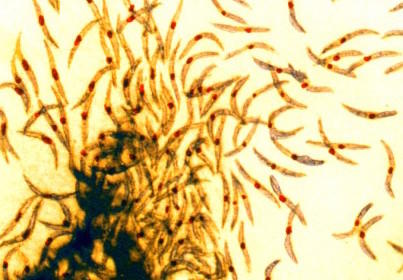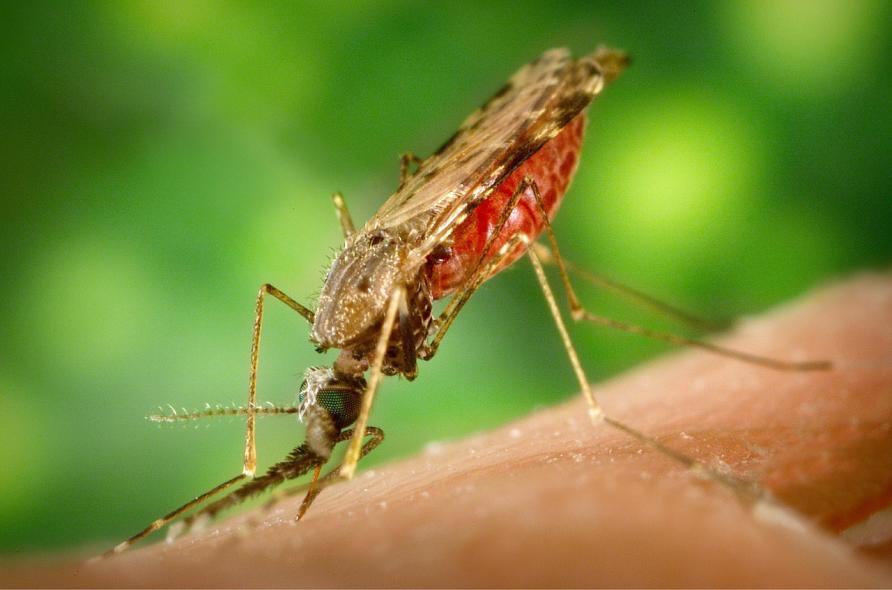25 Apr 2020
World Malaria Day
To mark World Malaria Day we’re profiling the work of our scientists Dr Daniel Fernandez-Ruiz and Professor William Heath, who are conducting research on immune cells and malaria parasites to lead us closer to an effective and efficient malaria vaccine. This article was first published in Pursuit.
Armour against malaria
Written by Dr Daniel Fernandez-Ruiz and Professor William Heath, The University of Melbourne at the Peter Doherty Institute for Infection and Immunity
Efforts to develop an effective vaccine against malaria have been going on for decades with so far limited success.
But by building on the latest research on immune cells, we have discovered a new vaccine strategy that focuses on building immunity directly in the liver, an obligatory stage of infection for the parasite before it infects our blood streams. In mice we have been able use a two-stage vaccination process to first attract immune cells to the liver and then keep them there, quickly stopping the parasite before it can escape into the blood stream.
The discovery, published in the journal Immunity, means existing potential vaccines could well be made more effective by using a similar mechanism to promote the permanent residence of immune cells in the liver for protection.

While efforts to control malaria-carrying mosquitoes are bringing down infection rates, malaria remains a terrible killer in poorer countries. There were 438,000 deaths from malaria in 2015, many of them children aged under five. In all there were 214 million cases of malaria.
Malaria parasites are deposited in the skin when an infected mosquito feeds. The parasites then quickly make their way to the liver, where they infect the organ’s building blocks, called hepatocytes. Within a few days, after undergoing a metamorphosis, they enter the blood where they infect red blood cells, causing fever, headaches, chills and potentially death.
Memory and immunity
The liver stage of the infection is carried out by an extremely low number of parasites - probably less than a hundred. This is in stark contrast to the blood stage, where parasite numbers can easily reach hundreds of millions. It would be logical to think that parasite elimination from the liver would be easier than from the blood, but it’s actually the low number of parasites in the liver that makes them difficult to control given the liver is such a big organ, made up of billions of hepatocytes. After a mosquito bite, only one in every 100 million hepatocytes become infected, and parasites only remain in these hepatocytes for about a week before moving to the blood. The low frequency of infected hepatocytes and the short time before the parasites spread, makes it a pretty hard game of hide and seek for the immune system to protect from the infection.
Immunological memory is a remarkable feature of our immune system that allows pathogens to be combatted more efficiently the second time we encounter them. It is provided by long-lived immune cells, called memory cells, that are formed during the first infection and can respond quickly when the same pathogen infects again. The process is exploited by vaccination, which prompts memory cells to form against a fake infection, for example by exposing our immune system to a dead bug or a part of it (called an antigen) to give us protection should we ever encounter the live bug.

Until recently, it was thought that memory cells constantly recirculated throughout the body in the blood, and that alarm signals generated upon infection called them into the infected tissues to destroy the infecting pathogen. This meant that precious time was required to recruit circulating memory cells to where they are needed. This has been a critical weakness against the fast-moving malaria parasite.
In the last few years, however, our view that all memory cells recirculate around the body has been changed by the discovery of tissue-resident memory T cells. This discovery was pioneered by Associate Professor Thomas Gebhardt, Dr Laura Mackay and Professor Frank Carbone, also from The University of Melbourne at the Doherty Institute. They found that some memory T cells could actually permanently seed in organs and be available for future battles, such as in the skin during herpes infection.
The advantage of tissue-resident T cells was that unlike circulating memory cells, they did not need time to migrate to the site of infection, but were already on site for rapid attack. We hypothesised that tissue-resident memory cells might also exist in the liver and they might provide a critical advantage over circulating memory T cells in finding and killing liver stage malaria parasites.

To test our hypothesis, we first demonstrated that resident memory T cells can form in the liver. Then, together with our collaborators at the Monash Biomedicine Discovery Institute and Centenary Institute, we designed a new vaccination strategy called ‘prime and trap’ that is aimed at inducing the formation of these cells. We achieved this by delivering our vaccine in two stages. The first stage, or the ‘priming’, maximised the expansion of specific malaria-fighting T cells, while in the second stage we delivered the malaria antigen specifically to the liver. This resulted in the effective ‘trapping’ of T cells in the liver as responding T cells are converted into liver-resident memory cells.
We found that ‘prime and trap’-vaccinated mice were completely protected against infection by malaria parasites. Moreover, when we removed liver resident memory cells from vaccinated mice, protection was totally lost, indicating that these cells were essential for protection.
What Next?
Our vaccine is at an early experimental stage and is not applicable to humans in its present form. Our next challenges are to find equivalent antigens in the human parasite to those we used in our mouse vaccine and to design feasible and safe ways to deliver the vaccine to humans.
However, our work opens a new avenue for the design of efficient anti-malarial vaccines. It suggests that the efficacy of the experimental vaccines already under development might be enhanced by promoting the formation of liver-resident memory T cells.


